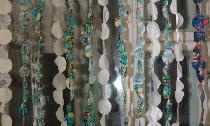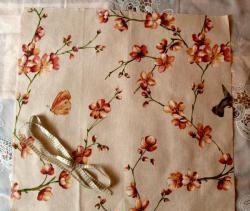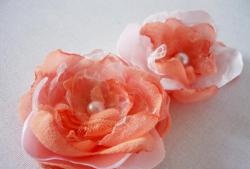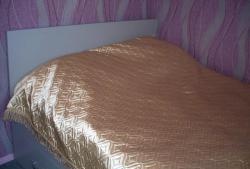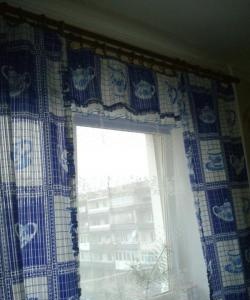This article provides a detailed description of the process of making Roman blinds.
Finished curtain size: height 1.52 m, width 1.15 m.
To make a Roman blind you will need the following materials and tools:
1. two types of fabric (top fabric - organza, lining fabric - voile),
2. sewing threads in the color of the fabric, 4 spools,
3. fiberglass inserts, 4 pcs., length 1.15 m,
4. weighting material, 1 pc., length 1.14 m,
5. sewing machine,
6. overlock,
7. iron,
8. Velcro (Velcro), soft, 1.15 m long,
9. cornice for Roman blinds, 1.52 m high and 1.15 m wide.
10. transparent plastic rings, 12 pcs.,
11. transparent plastic end switches, 3 pcs.
12. safety pins,
13. tailor's chalk,
14. bugles on a satin ribbon, 2.20 m.
Before cutting, it is necessary to iron both fabrics very well so that they immediately give maximum shrinkage. Otherwise, if the fabrics “sit” in the finished curtain, this will negatively affect its appearance and linear dimensions.

The diagram shows a finished Roman blind.
The cut of the curtain should be of the following size: height - 1.60 m, width - 1.17 m.
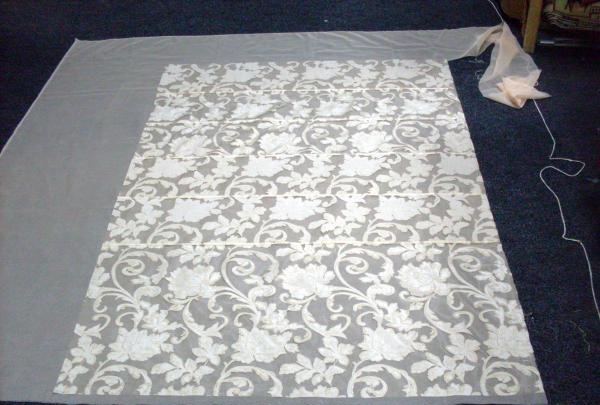
Align one longitudinal and one transverse section of both fabrics (along the height and width of the future curtain).
It is more convenient to do this by spreading the fabrics on the floor (preferably on a carpet so that they do not slip).
Using safety pins, pin both fabrics together along these sections, folding them with the right sides inward.

Sew the chipped edges using an overlocker. Don't forget to remove the pins as you go so that they don't get caught by the overlock knife.
Pin the processed sections into a stretch on the ironing table, iron and leave until completely cool.

Lay the curtain on the floor. From the processed cut, set aside the width of the curtain (1.17 m) in the opposite direction. The finished width of the curtain is 1.15 m, but to this size we add 1.5 cm for seams and 0.5 cm for processing.
Mark the line of the second side of the curtain with chalk. Peel off the layers of fabric and cut along the marked line.
Remove the pins. Sew the sections of the second side of the curtain separately from each other.
Pull the processed sections with an iron in the same way as the first seams.
If the seams are not pulled back (i.e., fixed to the desired length with an iron), then the seams will subsequently become too tight, which will ruin the appearance of the curtains.
Pay attention to the markings of the finished curtain. It processes one wide drawstring (for weighting), and 4 narrow drawstrings (for fiberglass inserts). Before marking these drawstrings, pin the sections of the curtains, sewn separately, together.
Then mark the drawstrings according to the diagram. The width of the drawstring for the weighting agent is 3.5 cm, the narrow drawstring is 1 cm.
The distances between the drawstrings (in the diagram - “A”) are the same, 21 cm.
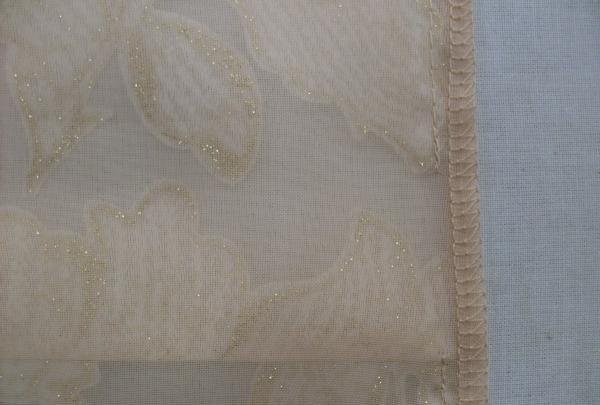
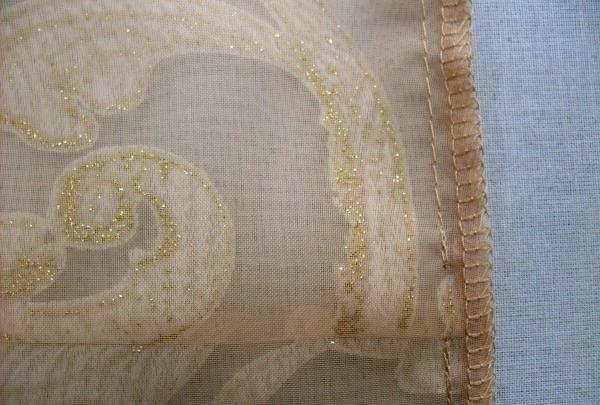
Sew the second side seam of the curtain, leaving the drawstrings unsewn.
Remove the pins. Turn the curtain right side out. Press all seams.
Lay the curtain on the table, if possible, pin it along the side and bottom seams.
Measure and set aside the finished length of the curtain. Place pins at these marks.
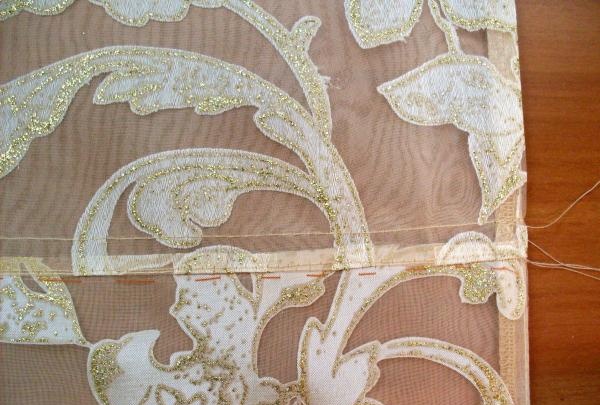
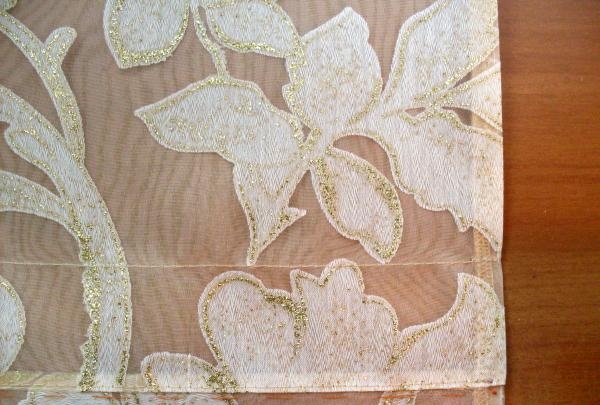
Mark the drawstrings along the front side of the curtain, and hand-stitch both layers of fabric at a distance of 5 mm from the drawstring stitch. This will help to avoid displacement of the layers relative to each other during the stitching process. Place stitches along the drawstrings. Remove the basting. Pull all the drawstrings in the same way as the seams.
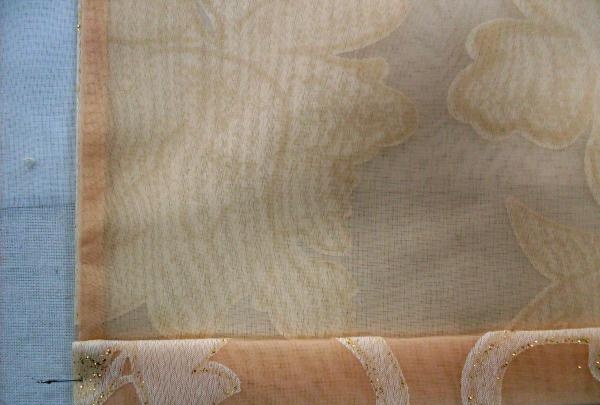
Iron the top edge of the curtain along the pins towards the wrong side. Trim the seam allowance to 4 cm. Then iron this seam allowance in half and pin it in several places to prevent the layers of fabric from shifting relative to each other due to thickness.
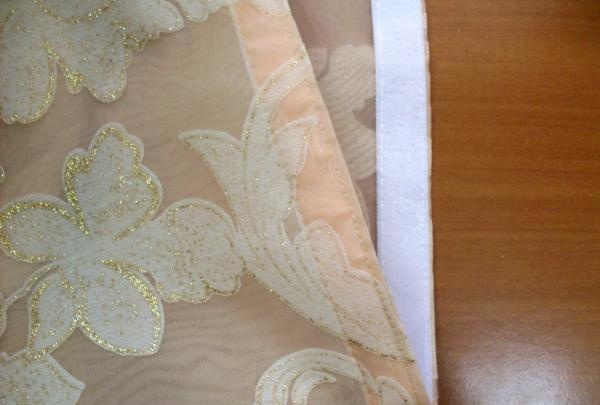
Sew soft Velcro onto the seam allowance at the top of the curtain. Remove the pins.

Sew the glass beads onto the tape using a zig-zag stitch along the bottom edge of the curtain (see markings in photo 1).
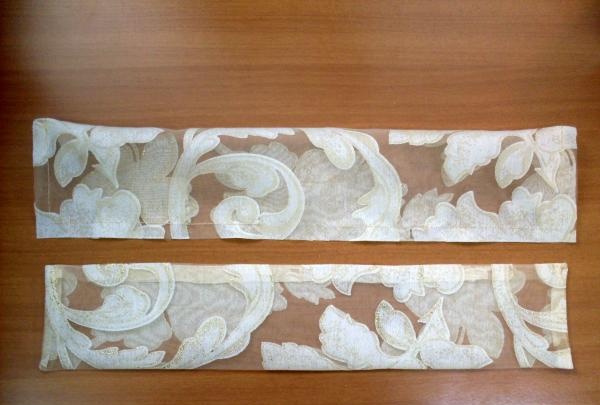
From organza, cut 2 loops to catch the bottom of the curtain. The size of the loop in the cut is 40*18 cm.
Fold the loop in half lengthwise, stitch along the edges with a 1 cm wide seam, leaving a small hole in the longitudinal seam for turning. Turn the loop right side out and iron.
Mark the location of the loops on the curtain. They will be located at a distance of 36 cm from the side seams.
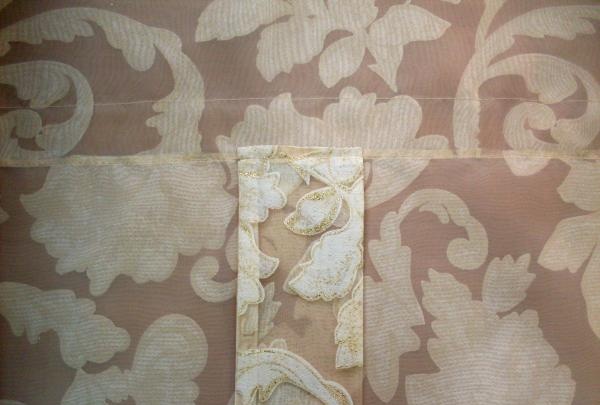
Sew the loop to the wrong side of the curtain.
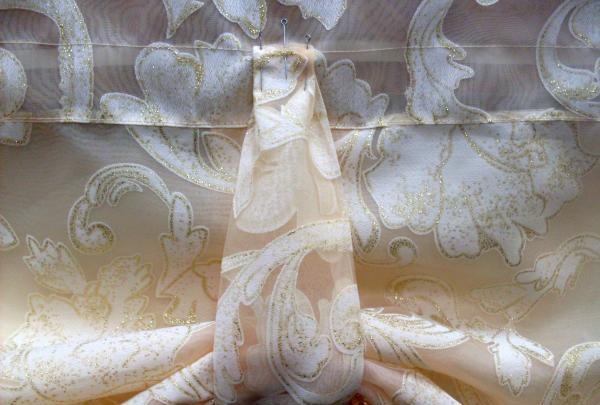
Sew a loop onto the front side of the curtain, gathering it into 2 small folds.
Sew the ends and rings on the wrong side of the Roman shade. The end pieces are sewn onto the drawstring under the weighting material, the rings are sewn onto the drawstring under the fiberglass inserts. The outer rings and ends are sewn at a distance of 8 cm from the side seam, and the central ones - in the middle between them.
Iron the finished curtain if necessary. Assemble the curtain rod for the Roman shade.Hang it on the cornice, and attach the cornice to the ceiling or wall above the window.

The Roman blind is ready!
